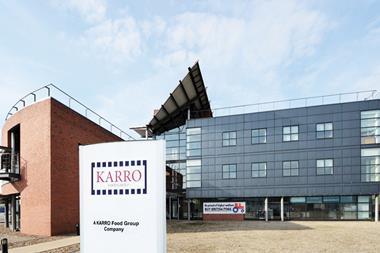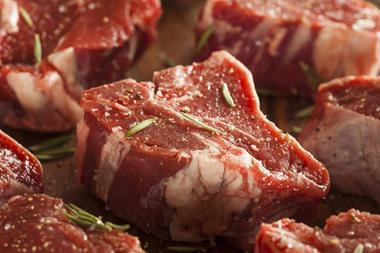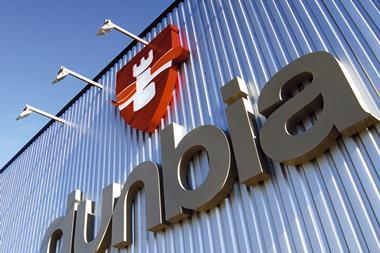The Grocer broke the news last week that Northern Irish processor Dunbia and the red meat business of 2 Sisters are engaged in exclusive talks for a £1.3bn merger. So what would it mean for both parties and the red meat market as a whole?
Who’s bringing what to the table? 2 Sisters is well known for its dominance in poultry, which makes up over half its £3.1bn annual revenues. Its red meat business plays a definite second fiddle. Of its 48 UK sites, employing 23,000 workers, only four operate in beef and lamb - all picked up from acquiring Vion UK in 2013. The three St Merryn facilities - a beef processing site and packing factory in Cornwall, and a flagship base in Wales - are capable of slaughtering and deboning 4,275 cattle and 24,000 lamb a week and packing 2,300 tonnes of meat, with another 1,550 cattle and 2,750 lambs at a separate plant in Aberdeen. 2 sisters doesn’t break down red meat sales, but they are estimated to be worth £500m of the £2.2bn in the protein division.
Dunbia is the bigger of the two in terms of red meat sales, with its top line growing to £827m in 2014/15. Its 13 sites, spread across Ireland, England, Scotland and Wales, employ close to 4,000 staff and process 300,000 cattle, 1.4 million lambs and 800,000 pigs a year. Over half its business involves selling to the major UK supermarkets, including Sainsbury’s, Asda and The Co-op, although it exports to 20 countries.
What’s the rationale? Access to overseas markets in the Far East, where Dunbia offloads a high quantity of offal, would no doubt be attractive to 2 Sisters managing carcase balance. But being able to bargain with the UK multiples on a more equal footing is key to understanding 2 Sisters CEO Ranjit Singh’s thinking, according to several senior meat industry sources. As it stands, Tesco is its only significant red meat customer. “It is about expanding from being a one-trick pony for 2 Sisters,” one source says. “It has also lost market share as Hilton Food has increased volume and won more business with Tesco.”
Dunbia supplies all The Co-op’s beef and a good chunk of Asda’s and over 50% of the lamb in the two, as well as most of Sainsbury’s lamb.
The merger should also allow the two to rationalise facilities. Chris Stott, transaction services partner at KPMG, believes 2 Sisters will look to further rationalise its red meat facilities. “There is likely to be a lot of undelivered synergies, particularly on the cost side, and that’s a real area of expertise that Ranjit brings to the table.”
Another dealmaker sources suggests “Dunbia’s processing sites are unlikely to be any better than 2 Sisters’, in fact they could be less invested, so potential synergy opportunity could exist.” The Dunbia portfolio of sites, he adds, were brought together mostly through recent acquisitions, “and further integration synergy should be available”.
But there will be challenges. Another dealmaker source points out red meat margins are slender (Dunbia’s operating margin was just 1% last year). “But if anyone can turn it around, Ranjit can, and it would certainly help bolster his own red meat business to boot.” the source says.
Who will run the new business? As The Grocer understands, this is a merger, avoiding the need for money to exchange hands. Given that the two businesses are different in size and potentially in profitability, the respective stakes are likely to form a key part of the current negotiations.
A City source says: “Ranjit probably can’t afford to buy Dunbia, or the two sides can’t agree a valuation, so it’s easier to decide how much equity each side would hold in a combined company with a view to selling a better, stronger business five years down the line.”
It’s a potentially neat solution for both parties, he adds: “Ranjit’s red meat business has been going nowhere so this gives him a chance to scale up without further investment. And as the majority partner, with the most experience in red meat, the Dobson family may also hope to be involved in the day-to-day.”
What about the Dunbia pork business? With Vion’s pork assets sold to Karro Foods ahead of the 2 Sisters deal, 2 Sisters currently has no significant pork business. As for Dunbia, the press has linked Tulip, Danish Crown and Cranswick to its pig division, and after losing the Sainsbury’s contract last August a dealmaker source says it wouldn’t be surprised if the two parties chose to focus on red meat only through a programme of disposals. But another City source argues Singh has never voluntarily sold a business in 23 years of trading. “He is not a seller by nature; his talent lies in taking on a business and improving it. Ranjit understands protein, it is at the core of the group, and how to take it into the retailers.”
What does it all mean for the red meat sector? It’s a competitive industry in the UK market, with ABP, Hilton, Dawn, Scotbeef and Randall Parker locking horns. “With slim margins, scale and efficiency is key in these private label categories so it would not be a surprise if some sites are closed, with volumes dropped into St Merryn and improving profitability there,” says one of the sources.
Will competition issues arise? With sales of £1.3bn and a combined share approaching 35% (Dunbia 20%; 2 Sisters 14%), it would still lag behind ABP in beef but its share in lamb is likely to exceed 25%, potentially triggering a Competitive Markets Authority investigation say industry insiders. However, this is a seasonal and global market so local share may not be viewed as material. And in any case plants can easily be sold off, say meat sources.
Bigger worries centre on how a merger would affect retailers and farmers.
“The freedom for manoeuvre for the big supermarkets to shift volumes around could be diminished with one less player in the industry and the same would be true for farmers,” the source says.
John Royle, chief livestock adviser at the NFU, adds where there is less competition there is a drive to pay less. “It is a cutthroat world where they are all bidding for these retail jobs and are getting farmers’ cattle cheaper and cheaper,” he says. Add to that a tightening in processor specs and the payment grid system, where farmers are paid depending on carcase classification and how it is graded, and it is a potentially lethal cocktail for farmers, he adds.
Sign in to comment on this article
Not logged in before? Register for FREE guest access today.
You will be able to:
- Read more stories
- Receive daily newsletters
- Comment on stories
Advert



















No comments yet